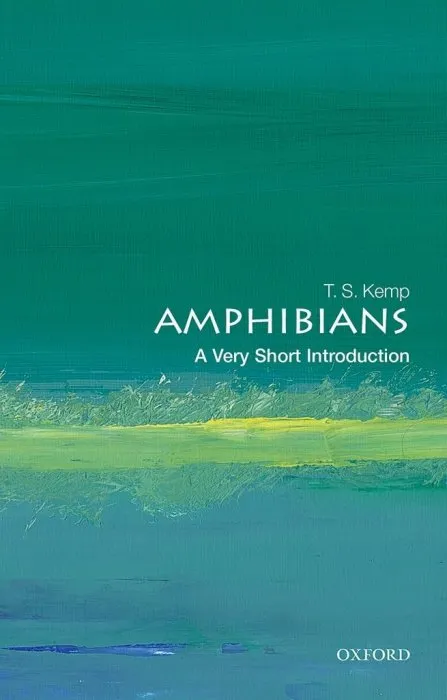Amphibians: A Very Short Introduction (Very Short Introductions)

Date: October 1st, 2021
ISBN: 0198842988
Language: English
Number of pages: 160 pages
Format: EPUB
Add favorites
Very Short Introductions: Brilliant, Sharp, Inspiring
From frogs, toads, newts, and salamanders, to the lesser-known caecilians, there are over 8,000 species of amphibians alive today. Characterised by their moist, naked skin and the tadpole phase of their lives, they are uniquely adapted to occupy the interphase habitat between freshwater and land.
This Very Short Introduction explores amphibians' evolution, adaptations, and biology, from the first emergence of tetrapods onto land 370 million years ago, to how their permeable skin enables them to thrive in their habitat today. T. S. Kemp describes how different amphibians go about their lives, looking in particular at their complex courtship behaviour and their extraordinary means of providing care for their eggs and larvae. Finally, he considers amphibians' relationship to humans, and the ways in which they have been exploited as food, folk medicine, and pets, as well as used in many areas of scientific research. Today amphibians face a serious threat, with almost half of species judged to be at risk of extinction. As the causes include habitat destruction, pollution, and disease, mostly resulting from human activity, T. S. Kemp shows that the conservation of amphibians is very much in our hands.
From frogs, toads, newts, and salamanders, to the lesser-known caecilians, there are over 8,000 species of amphibians alive today. Characterised by their moist, naked skin and the tadpole phase of their lives, they are uniquely adapted to occupy the interphase habitat between freshwater and land.
This Very Short Introduction explores amphibians' evolution, adaptations, and biology, from the first emergence of tetrapods onto land 370 million years ago, to how their permeable skin enables them to thrive in their habitat today. T. S. Kemp describes how different amphibians go about their lives, looking in particular at their complex courtship behaviour and their extraordinary means of providing care for their eggs and larvae. Finally, he considers amphibians' relationship to humans, and the ways in which they have been exploited as food, folk medicine, and pets, as well as used in many areas of scientific research. Today amphibians face a serious threat, with almost half of species judged to be at risk of extinction. As the causes include habitat destruction, pollution, and disease, mostly resulting from human activity, T. S. Kemp shows that the conservation of amphibians is very much in our hands.
Download Amphibians: A Very Short Introduction (Very Short Introductions)
Similar books
Information
Users of Guests are not allowed to comment this publication.
Users of Guests are not allowed to comment this publication.




